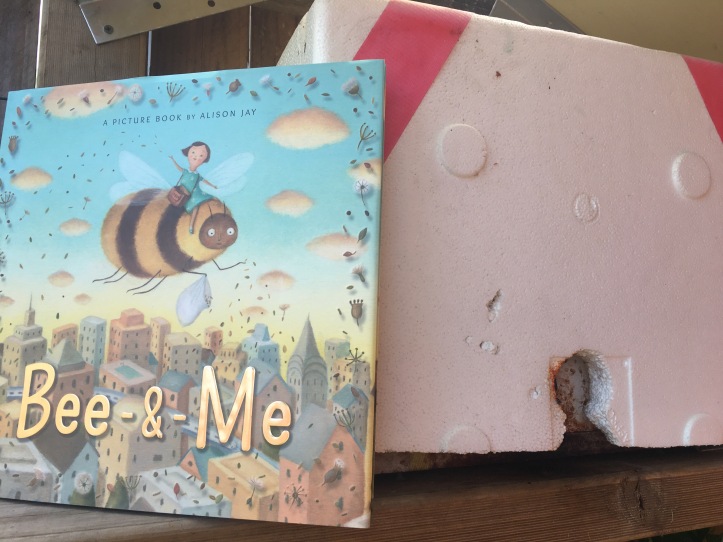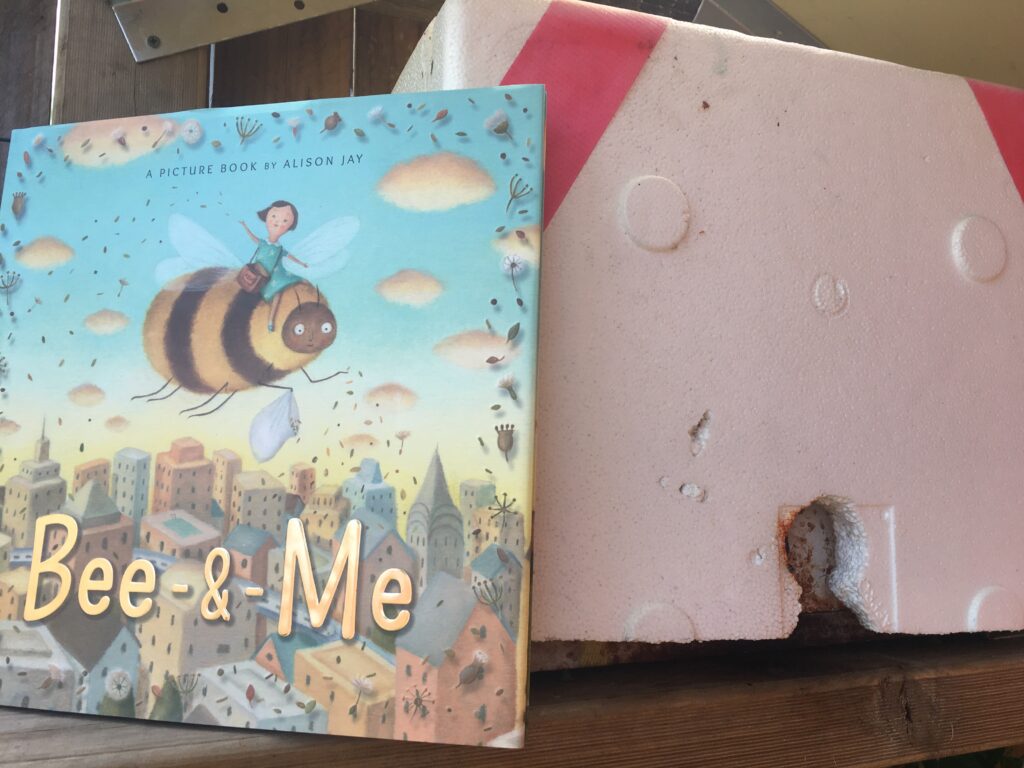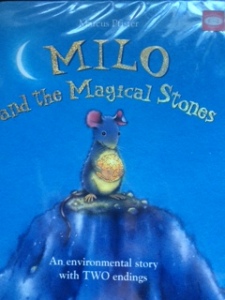~ A story about friendship ~
Have you ever read a book without words? Some people may find this difficult as it opens up many possibilities, different interpretations and imagination. But it is something we need to introduce ourselves and our children to – as just because the words are not on the page does not mean they are not there.
I have always loved books without words as you can decide what happens on each page and look more closely at the illustrations which can tell us so much more.

Bee and Me by Alison Jay is set in a bustling city of cars, trucks, people, shops and high rise buildings but no flowers.
A little girl is frightened by a bee who lands on her windowsill but luckily rather than swat it with the fly swatter she looks after the exhausted insect and sends it on it’s way.
The bee returns in need of more care and the two form a beautiful friendship.
The double page of play between the girl and the bee is wonderful to sit and stare at with your child. Talk about what they are doing together and the emotions they are feeling as they spend wonderful moments together.
The bee soon realises that although he has the girl – he longs for flowers. So together they embark on a magical journey to find flowers, seeds and more green to the dull city.
Bee and Me warmed my heart – the friendship between the two is infectious and the message about the importance of bees is also taught – which is vital as so many cities are lacking bees, butterflies and other beneficial insects due to lack of flowers, plants and green!
So what can you do at home or at school with this book?
- Have a look around your home and see what would entice any type of insect to your area? all insects are beneficial and attracting them to something they can live off or eat is important. It’s better they live off the plants than things in your house!
- PROJECT: How can we provide the best home for attracting bees? Investigate what the bees (local to your area) need. Draw up a plan of what the hive would look like, where it should be placed, what conditions it needs to attract bees and to survive. (This project includes outcome links to mathematics, literacy, science and geography)
- Alison Jay has left a parting note at the back of her book about the beneficial flowers you can plant in your garden. Herbs are an easy plant to start with as they can be grown in small planter boxes on windowsills – give rosemary, thyme or mint a go.
- It is important that you find out about the beneficial flowers that help bees in your area too. Australian stingless bees love:
| Abelia x grandiflora | Abelia |
| Buddleja * | Butterfly Bush |
| Callistemon | Bottlebrush |
| Eucalyptus | Gum Blossom |
| Grevillea | Spider Flower |
| Lavandula | Lavender |
| Leptospermum | Tea Tree |
| Melaleuca | Honey Myrtle |
| Westringia | Rosemary |
| Many Varieties | Daisies |
- See my older posts about bees and link in some of those ideas to this book.
- Visual Literacy – Books without pictures open a myriad of possibilities. One activity to try is to tell the story from the bee’s perspective and then the girls. Compare the two stories – compare the emotions, the goals and the thoughts of the two characters.
- Find some more books that have bees in them – you’ll bee surprised! Do these stories all have a similar message to tell?
- Compare scientific literature to children books that are on the topic of bees. Why do we need both types of literature out there to understand the need for bees in our world? Create your own bee themed picture book based on some scientific literature.
- Create your own story about your adventure with a bee. Which flowers would you like to visit? Divide a page into four sections and draw a series of pictures that show what you would like to do with a bee to make sure there are enough flowers, fruits and vegetables in the world.
How is honey used in our lives apart from to eat? Investigate the different properties of honey and how it is used in a myriad of products!
Where are bees located? What type of environment do they need to thrive? Create a honey bee and a stingless bee map of Australia.
Why are honey bee hives made out of hexagonal shapes?
Why do stingless bee hives spiral shaped?
Investigate the different shapes of bee hives across the globe and why they are this shape. Could they be another shape? Investigate if there is a better way to keep honey in a hive.



